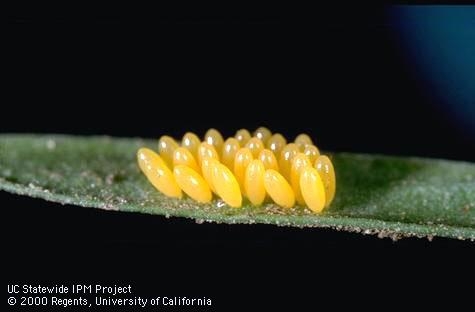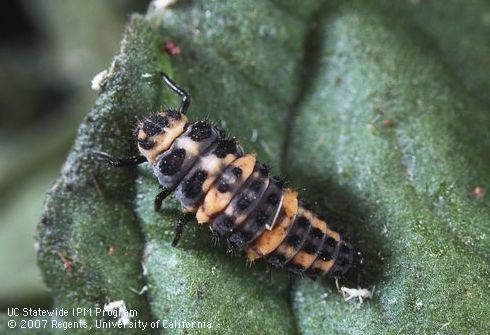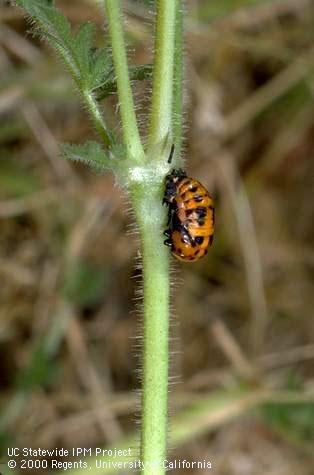- Author: Gerry L Hernandez
This article is mainly from the UC Master Gardeners of Butte County's blog, The Real Dirt. I've shortened it.
Ladybugs (Ladybeetles) are beneficial insects that play a major role in keeping down populations of insects that feed on plants. Perhaps most importantly, ladybugs are predators with an insatiable appetite for aphids. A ladybug can eat up to 5,000 aphids over its lifetime. They can also help to rid your garden of other soft-bodied insects such as mites, mealybugs and leafhoppers, along with insect eggs and even ants.
450 ladybug species are native to North America, with 175 of those species found here in California.
Adults mate in early spring (when temperatures reach above 65 degrees) and again in June if the aphid population is abundant. When aphid populations decline, ladybugs migrate to higher elevations.
Ladybugs undergo a complete metamorphosis during their life cycle, moving through the four stages:
Interestingly, ladybugs beat their wings 85 times per second in order to fly. When threatened, a ladybug can draw its head into its pronotum, like a turtle does, to protect itself.
Ladybugs hibernate in the winter months and will not fly when temperatures fall below 55 degrees. They feed on pollen and nectar and live on stored fat through the winter. Ladybugs are not preyed upon by birds or other vertebrates because they exude a very distasteful fluid from joints in their legs; their distinctive colors are a reminder to would be predators they taste “bad”. When threatened, ladybugs will play dead.
How can I attract ladybugs to my garden?
Ladybugs will only hang out in the garden if there is something for them to eat and they eat aphids! If you are going to buy ladybugs make sure you have a ready supply of aphids available. For successful handling and release of ladybugs purchased at a store, keep them refrigerated until time for release. They may be dehydrated when purchased, so mist them with water from a squirt bottle before putting them in the refrigerator. Do not release them into your garden during the daytime or they will fly away immediately. Instead release them at dusk or early morning. Be prepared for ladybugs to fly away in a few days as they typically don't lay eggs on the plants they have been released on. “The key here is to get your neighbors to purchase ladybugs.” Haha, anyway…..
When you see ladybugs, remember that they are considered lucky in many cultures, for various reasons. Enjoy them in your garden until they fly away, fly away home (or to your neighbors' garden).



